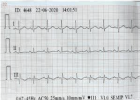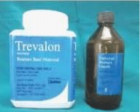Abstract
Research Article
Pneumothorax as Complication of CT Guided Lung Biopsy: Frequency, Severity and Assessment of Risk Factors
Gaurav Raj*, Neha Kumari, Neha Singh, Kaustubh Gupta, Anurag Gupta, Pradyuman Singh and Hemant Gupta
Published: 12 February, 2025 | Volume 9 - Issue 1 | Pages: 012-016
Background: CT-guided lung biopsy is routinely performed minimally invasive procedure. Imaging findings in the lung can have a broad differential diagnosis; therefore, it is indicated for definitive determination of pulmonary nodules or masses. Post-biopsy complications are common with most of them manageable in daycare. As pneumothorax is the most common complication, frequency and severity of pneumothorax with assessment of risk factors and follow-up for resolution is necessary.
Methods: A prospective evaluation of 123 biopsies with automated coaxial biopsy of 18 gauge was done. Post-biopsy pneumothorax was evaluated for its incidence and resolution. The studied risk factors were; patient age, sex, lesion location, lesion size, shortest pleural lesion depth, traversed lung parenchymal distance, presence of emphysema, fissure penetration, needle thoracic wall angle, and lesion characteristics.
Results: Reported immediate post-procedural pneumothorax was 22% with 19% of mild, 4% of moderate and 2.4% of severe cases. 51.9% of cases showed resolution within 24 hours. The intervention was required in only 4.8% of biopsy cases. A significant p - value of pneumothorax with the nodule depth increased traversed lung parenchymal distance, acute needle angle, fissure puncture, and presence of emphysema was seen. Emphysema was an independent variable in pneumothorax in multivariate analysis.
Conclusion: Pneumothorax is an unamenable consequence of CT-guided lung biopsy and a cautious approach should be kept in view of the variables that are associated with it to reduce its incidence and severity in patients.
Read Full Article HTML DOI: 10.29328/journal.jro.1001075 Cite this Article Read Full Article PDF
Keywords:
CT guided biopsy; Lung biopsy; Nodule; Pneumothorax; Post-intervention pneumothorax; Fissure puncture; Emphysema
References
- Heerink WJ, de Bock GH, de Jonge GJ, Groen HJM, Vliegenthart R, Oudkerk M. Complication rates of CT-guided transthoracic lung biopsy: meta-analysis. Eur Radiol. 2017;27(1):138–48. Available from: https://doi.org/10.1007/s00330-016-4357-8
- Lang D, Reinelt V, Horner A, Akbari K, Fellner F, Lichtenberger P, et al. Complications of CT-guided transthoracic lung biopsy. Wien Klin Wochenschr. 2018;130(7):288–92. Available from: https://doi.org/10.1007/s00508-018-1317-0
- Huang MD, Weng HH, Hsu SL, Hsu LS, Lin WM, Chen CW, et al. Accuracy and complications of CT-guided pulmonary core biopsy in small nodules: a single-center experience. Cancer Imaging. 2019 Jul 23;19:51. Available from: https://doi.org/10.1186/s40644-019-0240-6
- Li Y, Du Y, Yang HF, Yu JH, Xu XX. CT-guided percutaneous core needle biopsy for small (≤20 mm) pulmonary lesions. Clin Radiol. 2013 Jan;68(1):e43-48. Available from: https://doi.org/10.1016/j.crad.2012.09.008
- Elshafee AS, Karch A, Ringe KI, Shin H, Raatschen HJ, Soliman NY, et al. Complications of CT-guided lung biopsy with a non-coaxial semi-automated 18 gauge biopsy system: Frequency, severity and risk factors. PLoS ONE. 2019 Mar 18;14(3):e0213990. Available from: https://doi.org/10.1371/journal.pone.0213990
- Hiraki T, Mimura H, Gobara H, Shibamoto K, Inoue D, Matsui Y, et al. Incidence of and Risk Factors for Pneumothorax and Chest Tube Placement After CT Fluoroscopy–Guided Percutaneous Lung Biopsy: Retrospective Analysis of the Procedures Conducted Over a 9-Year Period. Am J Roentgenol. 2010;194(3):809–14. Available from: https://doi.org/10.2214/ajr.09.3224
- Nour-Eldin NE, Alsubhi M, Emam A, Lehnert T, Beeres M, Jacobi V, et al. Pneumothorax Complicating Coaxial and Non-coaxial CT-Guided Lung Biopsy: Comparative Analysis of Determining Risk Factors and Management of Pneumothorax in a Retrospective Review of 650 Patients. Cardiovasc Intervent Radiol. 2016;39(2):261–70. Available from: https://doi.org/10.1007/s00270-015-1167-3
- Gohari A, Haramati LB. Complications of CT Scan-Guided Lung Biopsy: Lesion Size and Depth Matter. Chest. 2004 Sep 1;126(3):666–8. Available from: https://doi.org/10.1378/chest.126.3.666
- Yeow KM, See LC, Lui KW, Lin MC, Tsao TC, Ng KF, et al. Risk factors for pneumothorax and bleeding after CT-guided percutaneous coaxial cutting needle biopsy of lung lesions. J Vasc Interv Radiol. 2001;12(11):1305–12. Available from: https://doi.org/10.1016/s1051-0443(07)61556-5
- Saji H, Nakamura H, Tsuchida T, Tsuboi M, Kawate N, Konaka C, et al. The Incidence and the Risk of Pneumothorax and Chest Tube Placement After Percutaneous CT-Guided Lung Biopsy: The Angle of the Needle Trajectory Is a Novel Predictor. Chest. 2002;121(5):1521–6. Available from: https://doi.org/10.1378/chest.121.5.1521
- Laurent F, Michel P, Latrabe V, Tunon de Lara M, Marthan R. Pneumothoraces and chest tube placement after CT-guided transthoracic lung biopsy using a coaxial technique: incidence and risk factors. Am J Roentgenol. 1999 Apr 1;172(4):1049–53. Available from: https://doi.org/10.2214/ajr.172.4.10587145
- Zhang L, Shi L, Xiao Z, Qiu H, Peng P, Zhang M. Coaxial technique-promoted diagnostic accuracy of CT-guided percutaneous cutting needle biopsy for small and deep lung lesions. PLoS One. 2018;13(2):e0192920. Available from: https://doi.org/10.1371/journal.pone.0192920
- Covey AM, Gandhi R, Brody LA, Getrajdman G, Thaler HT, Brown KT. Factors associated with pneumothorax and pneumothorax requiring treatment after percutaneous lung biopsy in 443 consecutive patients. J Vasc Interv Radiol. 2004;15(5):479–83. Available from: https://doi.org/10.1097/01.rvi.0000124951.24134.50
- Wu CC, Maher MM, Shepard J-AO. Complications of CT-guided percutaneous needle biopsy of the chest: prevention and management. Am J Roentgenol. 2011;196(6):W678–82. Available from: https://doi.org/10.2214/ajr.10.4659
Figures:
Similar Articles
-
HRCT imaging features of systemic sclerosis-associated interstitial lung diseaseXiao Zhang*,Zexuan Zhou,Guangfeng Zhang,Ting Xu,Haobo Lin. HRCT imaging features of systemic sclerosis-associated interstitial lung disease. . 2021 doi: 10.29328/journal.jro.1001036; 5: 035-041
-
Pneumothorax as Complication of CT Guided Lung Biopsy: Frequency, Severity and Assessment of Risk FactorsGaurav Raj*,Neha Kumari,Neha Singh,Kaustubh Gupta,Anurag Gupta,Pradyuman Singh,Hemant Gupta. Pneumothorax as Complication of CT Guided Lung Biopsy: Frequency, Severity and Assessment of Risk Factors. . 2025 doi: 10.29328/journal.jro.1001075; 9: 012-016
Recently Viewed
-
Navigating Neurodegenerative Disorders: A Comprehensive Review of Current and Emerging Therapies for Neurodegenerative DisordersShashikant Kharat*, Sanjana Mali*, Gayatri Korade, Rakhi Gaykar. Navigating Neurodegenerative Disorders: A Comprehensive Review of Current and Emerging Therapies for Neurodegenerative Disorders. J Neurosci Neurol Disord. 2024: doi: 10.29328/journal.jnnd.1001095; 8: 033-046
-
Obesity in Patients with Chronic Obstructive Pulmonary Disease as a Separate Clinical PhenotypeDaria A Prokonich*, Tatiana V Saprina, Ekaterina B Bukreeva. Obesity in Patients with Chronic Obstructive Pulmonary Disease as a Separate Clinical Phenotype. J Pulmonol Respir Res. 2024: doi: 10.29328/journal.jprr.1001060; 8: 053-055
-
Current Practices for Severe Alpha-1 Antitrypsin Deficiency Associated COPD and EmphysemaMJ Nicholson*, M Seigo. Current Practices for Severe Alpha-1 Antitrypsin Deficiency Associated COPD and Emphysema. J Pulmonol Respir Res. 2024: doi: 10.29328/journal.jprr.1001058; 8: 044-047
-
Clinical and Histopathological Mismatch: A Case Report of Acral FibromyxomaMonica Mishra*,Kailas Mulsange,Gunvanti Rathod,Deepthi Konda. Clinical and Histopathological Mismatch: A Case Report of Acral Fibromyxoma. Arch Pathol Clin Res. 2025: doi: 10.29328/journal.apcr.1001045; 9: 005-007
-
Unconventional powder method is a useful technique to determine the latent fingerprint impressionsHarshita Niranjan,Shweta Rai,Kapil Raikwar,Chanchal Kamle,Rakesh Mia*. Unconventional powder method is a useful technique to determine the latent fingerprint impressions. J Forensic Sci Res. 2022: doi: 10.29328/journal.jfsr.1001035; 6: 045-048
Most Viewed
-
Evaluation of Biostimulants Based on Recovered Protein Hydrolysates from Animal By-products as Plant Growth EnhancersH Pérez-Aguilar*, M Lacruz-Asaro, F Arán-Ais. Evaluation of Biostimulants Based on Recovered Protein Hydrolysates from Animal By-products as Plant Growth Enhancers. J Plant Sci Phytopathol. 2023 doi: 10.29328/journal.jpsp.1001104; 7: 042-047
-
Sinonasal Myxoma Extending into the Orbit in a 4-Year Old: A Case PresentationJulian A Purrinos*, Ramzi Younis. Sinonasal Myxoma Extending into the Orbit in a 4-Year Old: A Case Presentation. Arch Case Rep. 2024 doi: 10.29328/journal.acr.1001099; 8: 075-077
-
Feasibility study of magnetic sensing for detecting single-neuron action potentialsDenis Tonini,Kai Wu,Renata Saha,Jian-Ping Wang*. Feasibility study of magnetic sensing for detecting single-neuron action potentials. Ann Biomed Sci Eng. 2022 doi: 10.29328/journal.abse.1001018; 6: 019-029
-
Pediatric Dysgerminoma: Unveiling a Rare Ovarian TumorFaten Limaiem*, Khalil Saffar, Ahmed Halouani. Pediatric Dysgerminoma: Unveiling a Rare Ovarian Tumor. Arch Case Rep. 2024 doi: 10.29328/journal.acr.1001087; 8: 010-013
-
Physical activity can change the physiological and psychological circumstances during COVID-19 pandemic: A narrative reviewKhashayar Maroufi*. Physical activity can change the physiological and psychological circumstances during COVID-19 pandemic: A narrative review. J Sports Med Ther. 2021 doi: 10.29328/journal.jsmt.1001051; 6: 001-007

HSPI: We're glad you're here. Please click "create a new Query" if you are a new visitor to our website and need further information from us.
If you are already a member of our network and need to keep track of any developments regarding a question you have already submitted, click "take me to my Query."

















































































































































